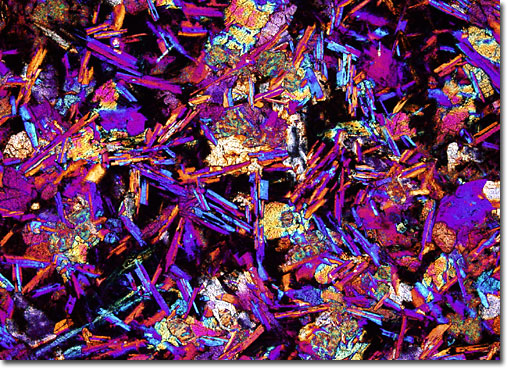|
Basalts may vary greatly in composition and form. Some types, for instance, are compact and display a smooth, glassy surface, while others are porous or feature large, distinct crystals in a groundmass matrix. These conspicuous crystals most commonly consist of augite, feldspars, and olivine. Basalts also typically contain about 50 percent silica, as well as a relatively large amount of iron and magnesium. Large deposits of basalt are present in numerous locations around the world, including the mid-oceanic islands, Iceland, Germany, Turkey, Australia, India, Italy, and the United States. The deposits vary in appearance as do the composition of the individual igneous rocks. For instance, in Wyoming, basalt is fashioned into the columns of rock known as the Devilís Tower, though in other locales the material may exhibit a more jagged or coil-like shape.
|
